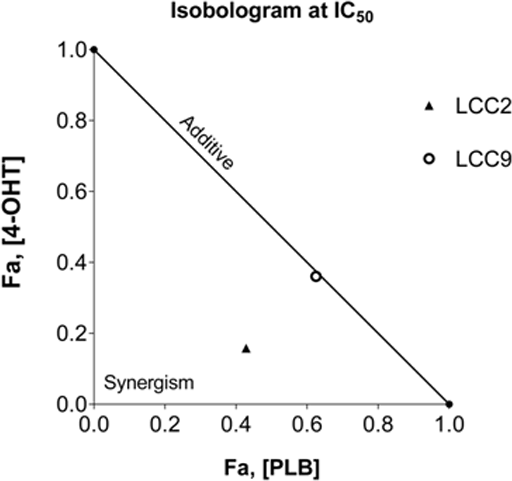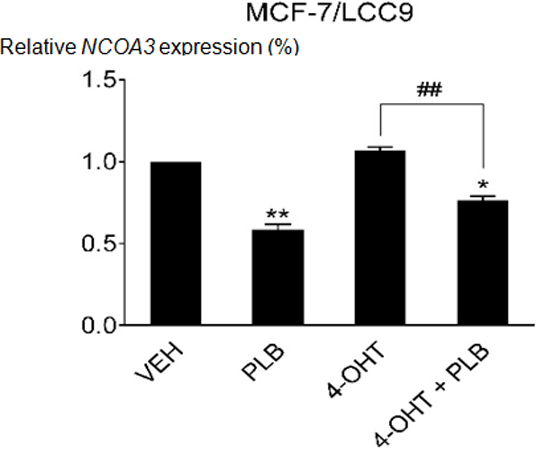Plumbagin Increased Tamoxifen Sensitivity by Mediating the Expression of NCOA3 in Tamoxifen Resistant Breast Cancer
The treatment of tamoxifen resistant breast cancer is very limited, resulting in increasing risk of cancer metastasis. One of the critical mechanisms of tamoxifen resistance is the increased expression of estrogen receptor (ER) coactivator, nuclear receptor co-activator 3 (NCOA3) (1,2). Plumbagin (PLB) or 5-hydroxy-2-methyl-1, 4-naphthoquinone has anti-cancer effects in various types of cancer. It has been shown to inhibit NF-κB activation in gastric cancer (3). NF-κB is also involved in tamoxifen resistance (4). The aim of this study was to determine whether PLB was able to increase tamoxifen sensitivity in tamoxifen-resistant cell lines (MCF-7/LCC2, MCF-7/LCC9) and the mechanisms underlying this effect. Tamoxifen response assay was performed by treating cells with PLB at 0.5 and 0.75 μM and different concentrations of 4-OH tamoxifen (4-OHT), then cell viability was measured by MTT assay. The interaction was analysed by CompuSyn program and demonstrated in isobologram. Levels of NCOA3 expression was studied by RT-PCR. Data are presented as mean ± SD from 3 independent experiments. The analysis was performed using one-way ANOVA followed by the LSD test. Isobologram demonstrated the interaction between PLB and tamoxifen which was revealed as synergistic effect in MCF-7/LCC2 and additive effect in MCF-7/LCC9 (figure 1). To study the mechanism of PLB to enhance the response of tamoxifen, the level of NCOA3 expression was evaluated. The combination of PLB and 4-OHT and PLB alone were able to significantly decrease expression of NCOA3 in MCF-7/LCC-9 by 42 and 24% (p=0.012,p=0.006) respectively (figure 2). The reduction of CyclinD1 and MYC, ER-target genes were also observed when treated with PLB.
Fig.1 Combination of PLB and 4-OHT increased tamoxifen sensitivity
Fig.2 PLB inhibited NCOA3 expression
In summary, PLB has an anti-cancer effect by enhancing tamoxifen sensitivity and is involved in modulating tamoxifen resistance at least in part by decreasing NCOA3 expression, the critical ER coactivator in tamoxifen resistant breast cancer cells. (1) List et al, (2001). Breast Cancer Res Treat 68: 21-28. (2) Weiner et al, (2013). Annals of Oncology 24: 1994-1999. (3) Hafeez et al, (2012). Int J Cancer 131: 2175-2186 (4) Hu et al, (2015). Mol Cell Biol 35: 379-390. Acknowledgement: We thank Dr Robert Clarke for kindly providing MCF-7/LCC2 and MCF-7/LCC9 cell lines. This study was supported by the 90th Anniversary of Chulalongkorn University Fund (Ratchadaphiseksomphot Endowment Fund) (SN), Special Task Force for Activating Research (STAR) Ratchadaphiseksomphot Endownment fund to Overcoming Cancer Drug Resistance Research group (GSTAR 59-005-30-001), and Ratchadaphiseksomphot Fund Chulalongkorn University, grant number RA57/025 (KW).
|





